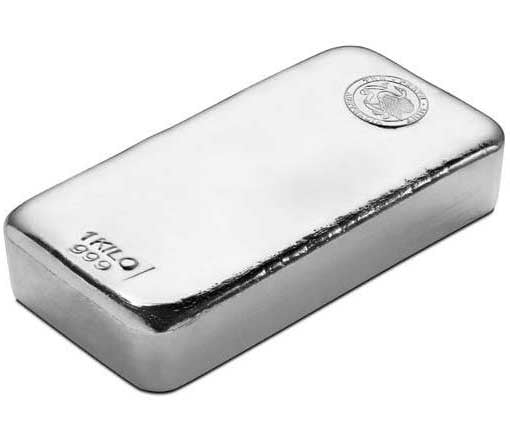Silver tarnishes due to a natural chemical reaction with sulfur-containing compounds in the air, water, or certain substances. The main factors contributing to the tarnishing of silver include:
-
Reaction with Sulfur Compounds: Silver reacts with sulfur compounds, such as hydrogen sulfide (H2S) or sulfur dioxide (SO2), which are present in the environment. These compounds can come from sources like air pollution, industrial emissions, certain foods (e.g., eggs, onions), or materials (e.g., rubber, latex) that contain sulfur.
-
Formation of Silver Sulfide: When silver comes into contact with sulfur compounds, a chemical reaction occurs, leading to the formation of silver sulfide (Ag2S) on the surface of the silver. Silver sulfide is a black or dark gray compound, causing the tarnished appearance of the silver.
-
Environmental Factors: Factors such as humidity, temperature, and air quality can influence the rate of tarnishing. Higher humidity levels and exposure to pollutants can accelerate the tarnishing process as they provide the necessary conditions for the reaction between silver and sulfur compounds.
-
Oxidation: Silver can also undergo a process called oxidation, where it reacts with oxygen in the air. This can lead to the formation of a thin layer of silver oxide (Ag2O) on the surface of the silver. While silver oxide can provide some protection against further tarnishing, it can also contribute to the overall darkening of the silver.
-
Contact with Other Metals: Silver can tarnish more rapidly when it comes into contact with certain metals or alloys that contain metals like copper or sulfur. These metals can release sulfur compounds or cause galvanic reactions, accelerating the tarnishing process.
-
Handling and Skin Contact: The natural oils, acids, and salts present on our skin can contribute to the tarnishing of silver. Regular handling and skin contact transfer these substances onto the silver, which can react with sulfur compounds in the environment and promote tarnishing.
It's important to note that tarnishing is a natural property of silver and does not indicate poor quality. In fact, the tarnish can provide a desirable antique or patina look for certain silver items. However, if you prefer to maintain the shiny appearance of your silver, regular cleaning and appropriate storage can help slow down the tarnishing process.
Various preventive measures can be taken to minimize tarnishing, such as storing silver in airtight containers or with anti-tarnish materials, keeping it clean and dry, and avoiding contact with sulfur-containing substances. Regular cleaning using mild silver polishes or cleaning solutions can also help remove tarnish and restore the silver's luster.
Here are more details and facts about why silver tarnishes:
-
Chemical Reaction: Tarnishing occurs due to a chemical reaction between silver and sulfur compounds, primarily hydrogen sulfide (H2S) and sulfur dioxide (SO2), which are present in the environment. These compounds can be released from sources such as volcanic activity, industrial emissions, burning fossil fuels, and even certain foods.
-
Formation of Silver Sulfide: When silver reacts with sulfur compounds, it forms a compound called silver sulfide (Ag2S) on the surface of the silver. Silver sulfide is black or dark gray in color, leading to the tarnished appearance. The reaction can be summarized as follows:
2Ag + H2S → Ag2S + H2
-
Surface Layer: Tarnishing occurs on the outermost layer of the silver object, where the silver atoms react with sulfur compounds. The silver sulfide layer that forms is typically very thin and adheres tightly to the surface.
-
Factors Affecting Tarnishing Rate: Several factors influence the rate at which silver tarnishes:
- Humidity: Higher humidity levels increase the moisture content in the air, accelerating the tarnishing process.
- Air Pollution: Presence of sulfur compounds and other pollutants in the air can enhance tarnishing.
- Temperature: Higher temperatures can speed up chemical reactions, including the reaction between silver and sulfur compounds.
- Exposure Time: Prolonged exposure to sulfur compounds increases the likelihood and extent of tarnishing.
-
Other Tarnish Colors: While silver sulfide is the most common cause of tarnish and appears black, tarnished silver can exhibit various colors depending on the specific compounds formed. For example, silver can turn yellowish-brown due to the formation of silver polysulfides (Ag2Sx) or develop a rainbow-like iridescence called tarnish patina.
-
Protective Coatings: Some silver articles, such as silver-plated items or pieces with protective coatings, may tarnish less quickly. These coatings act as barriers, reducing the direct contact between silver and sulfur compounds in the environment.
-
Cleaning Agents and Polishing: Specialized silver polishes and cleaning agents contain chemicals that can remove the tarnish from the surface of silver items. These products typically work by dissolving the silver sulfide layer, exposing the underlying shiny silver. However, excessive or improper cleaning can potentially remove layers of silver and damage the item.
-
Prevention Measures: To minimize tarnishing, consider the following preventive measures:
- Proper Storage: Store silver items in airtight containers or bags to limit exposure to air and sulfur compounds.
- Anti-Tarnish Materials: Use anti-tarnish strips or silica gel packets in storage containers to absorb moisture and prevent tarnish.
- Avoid Exposure to Sulfur Sources: Keep silver items away from sulfur-containing materials like rubber, latex, and certain fabrics.
- Regular Cleaning: Clean silver regularly with mild silver polishes or cleaning solutions to remove tarnish and maintain its luster.

